Takoyaki - With a Delicious Recipe

They are a staple at every festival in Japan and capture the hearts of tourists: octopus fried in batter. Delicious snack or unusual dish?

Recipes in this blog post:
A dream for fish lovers
If you visit Japan and enjoy seafood, you will undoubtedly become a fan of Takoyaki. Translated, Takoyaki たこ焼き simply means "grilled octopus," expressing what the dish is all about: grilled octopus balls. They are prepared in special batter that envelops and steams the octopus.
Even though it sounds very nutritious, Takoyaki in Japan is not considered a full-fledged meal but rather a snack for in-between. Accordingly, they are preferably served as street food at festivals. There, you will also find other grilled or baked "Yaki" dishes like Yakisoba – buckwheat noodles in sauce, Taiyaki (fish-shaped pastry with sweet filling), and Okonomiyaki, vegetable and fish pancakes. The stalls that fry Takoyaki are called Yatai. For very enthusiastic fans, there are Yatai tours through the best Japanese "locals" in the area.
Like Okonomiyaki, these octopus balls also originate from the Japanese city of Osaka. They are considered local cultural heritage and are even honored with their own museum, which opened at the popular Universal Studios. Five established Takoyaki vendors serve historical and modern variations since their inception. The chefs showcase their skills in the form of creative Takoyaki – and there is no shortage of them.
How Osaka came up with the octopus balls
While Takoyaki is traditionally filled with diced octopus, you can also find or prepare them with shrimp, chicken, sausages, cheese, tofu, mushrooms, and other ingredients. A popular chain even mixes potatoes into the batter. One of their predecessors had nothing to do with seafood: Rajioyaki actually contained beef. Before the "radio balls," there were Choboyaki, which were more rectangular and flat instead of spherical.
So, who actually invented Takoyaki? These octopus balls, like many dough-based dishes, evolved during the Great Kanto Earthquake of 1923 and World War II when rice was scarce, and wheat was cheap. Dishes made from batter were initially marketed as Western food but eventually became integrated into the inventive, Japanese cuisine over time.
In 1935, octopus was likely first added to Choboyaki and proved to be a resounding success. We owe this to Endo Tomekichi, a street vendor from Osaka who experimented with dough pockets and created the new snack. Today, you can still try the original Takoyaki at the Aizuya chain in its hometown. The original Takoyaki is served without any sauces or toppings – pure taste and texture!
Another theory suggests that octopus balls originated from Akashiyaki, named after their origin west of Osaka. In Akashi city, dozens of stores still sell these balls made from softer, very egg-heavy batter and cooked octopus. The trend is said to have come from Akashi to Osaka, leading to the Rajioyaki stands. There, instead of beef, they started using affordable octopus as a filling, which is abundant in the sea. Additionally, the sauce has become richer compared to the mild, hot Akashi broth, and the batter is more wheat-based than egg-based.
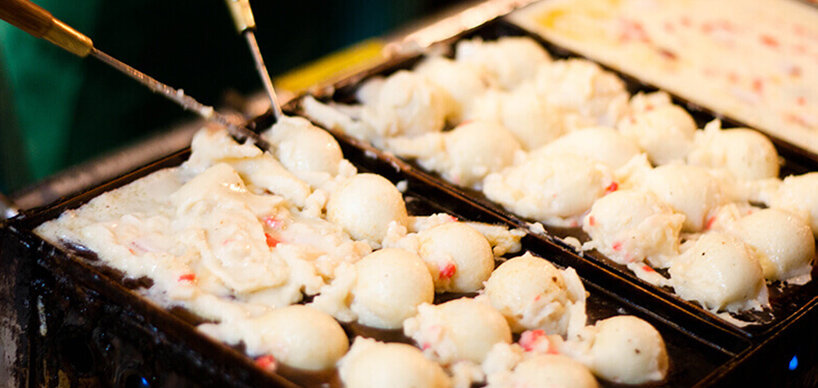
This should not be missing in Takoyaki
But what are Takoyaki typically made of today, besides octopus and other creative fillings? The batter consists of flour, egg, broth, vegetables like green onions, optionally ginger and/or shrimp, as well as pieces of tempura batter called Tenkasu.
In different regions, various types of octopus balls are preferred. In Tokyo, they are much larger, in Nagano Prefecture, they like to mix cabbage into the batter, and in Kobe, they often serve them with Dashi fish broth instead of the usual sauce that resembles Worcestershire sauce.
Once the balls are ready, they should be served fresh from the Takoyaki pan. In street stalls, you get them in sets of six in special boat-shaped paper cups. Additionally, they are topped with sauce, mayo, and Aonori seaweed or Katsuoboshi: dried bonito fish flakes.
One pan, one party, lots of fun
Anyone who has eaten Takoyaki on the street in Japan will have noticed the huge pans with many small cavities in which the balls sizzle and are flipped. Such a Takoyaki pan – just a bit smaller and made of cast iron – is owned by almost every resident of the Japanese Kansai region. It usually has 16 cavities that provide the perfect shape for Takoyaki. For those who want it even easier, they can get an electric Takoyaki maker. With this, you can also make many other interesting dishes, such as small burgers and sweet-filled dough balls.

This also provides the right equipment for a Tako pa – a Takoyaki party, as the Japanese love to celebrate. Among friends, they grill Takoyaki together and taste them. The chefs can surprise others by filling the balls with sweets or other unusual ingredients, so the eaters have to guess what's inside.
In Denmark, there is a similar dish that is larger and sweeter than the approximately 3 cm Takoyaki: Aebleskiver. There is also a special pan for them, but since the cavities are much too large, unfortunately, authentic Takoyaki cannot be prepared with it. However, you can still fill the balls with whatever you like. While octopus is abundant and inexpensive in Japan, it is considered exotic here in the West – and may not suit everyone's taste. Those who are brave will be rewarded with a unique blend of textures.
With this, you already have the right equipment for a Tako pa – a Takoyaki party, as the Japanese love to celebrate. Among friends, they grill Takoyaki together and taste them. The chefs can surprise others by filling the balls with sweets or other unusual ingredients, so the eaters have to guess what's inside.
In Denmark, there is a similar dish that is larger and sweeter than the approximately 3 cm Takoyaki: Aebleskiver. There is also a special pan for them, but since the cavities are much too large, unfortunately, authentic Takoyaki cannot be prepared with it. However, you can still fill the balls with whatever you like. While octopus is abundant and inexpensive in Japan, it is considered exotic here in the West – and may not suit everyone's taste. Those who are brave will be rewarded with a unique blend of textures.
A recipe for takoyaki
Want to make your own octopus balls? Nothing easier than that. If you don't have a Takoyaki pan or a suitable device, you can also use a regular pan – preferably cast iron. In that case, you would need to make the dough firmer with more flour and cut small circles of about 3 cm in diameter to fill and shape the balls before frying them. Just be sure to use more oil, take your time, and cook the balls evenly.
The following recipe makes about 24 balls or 4 servings.
 4 personsNo. of persons
4 personsNo. of persons
 ca. 60 minutesTotal Time
ca. 60 minutesTotal Time
 easyLevel of difficulty
easyLevel of difficulty
 main mealDish
main mealDish
 ca. 600kcal per portionCalories
ca. 600kcal per portionCalories
 Fish
Fish
 Lactose-free
Lactose-free
 Alcohol
Alcohol
 Kitchenware
Kitchenware
|
150g
flour
|
|
1 tsp
salt
|
|
1 tsp
baking powder
|
|
360ml
Dashi fish stock (or other stock to taste)
|
|
2
eggs
|
|
2 tsp
soy sauce
|

|
120g
cooked octopus (or other filling to taste)
|
|
1 tbsp pickled ginger
|
|
2
Spring onions
|
|
20g
Tenkasu (e.g. from Otafuku, or leftovers from your own deep-fried tempura batter; if not available, you can also leave it out)
|
|
20g (Japanese) mayonnaise
|
|
10g
Bonito fish flakes
|
|
10g
Aonori: dried seaweed flakes
|
You can also easily make the sauce at home. If you prefer to use a ready-made sauce, you can find Otafuku's Takoyaki sauce at well-stocked Asian markets. Sauces for Okonomiyaki or Tonkatsu also work well with it.
|
130g
Sake
|
|
30ml
Mirin
|
|
240ml
soy sauce
|
|
1
Konbu (dried seaweed leaf used for broth)
|
|
240g
Bonito fish flakes
|
|
6 tbsp
Worcestershire-Sauce
|
|
2 tsp
Mentsuyu
|
|
2 tsp
sugar
|
|
2 tsp
ketchup
|

Tips for the Perfect Takoyaki
- If you've acquired the taste: A small investment in a high-quality Takoyaki pan is worth it.
- Don't skimp on the oil: It makes the Takoyaki crispier and flipping them easier.
- If you're a beginner, don't fill too many molds at once. Even professionals can't handle them all alone – better to start with half.
- If the batter overflows, that's normal: the filling wants to be covered from all sides.
- Don't flip the Takoyaki too early, as they may collapse – wait until they are already "ball-shaped."
- When flipping, you can push back the raw batter that oozes out of the balls, ensuring everything cooks through.
- Consume immediately once they are ready, but be careful not to burn yourself!

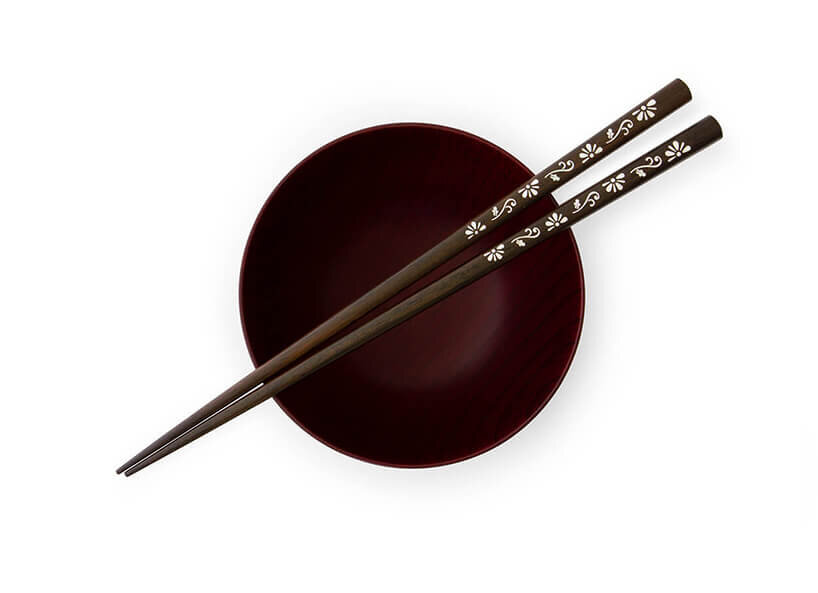
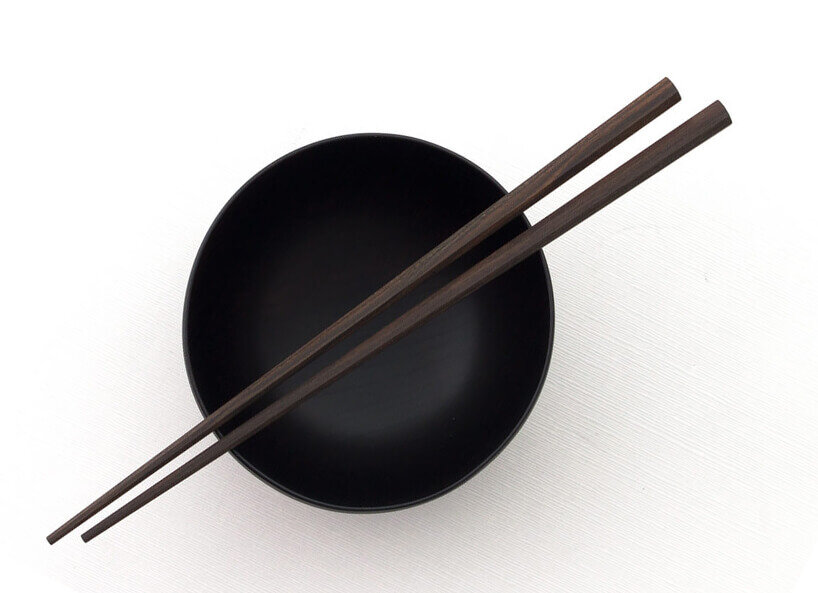
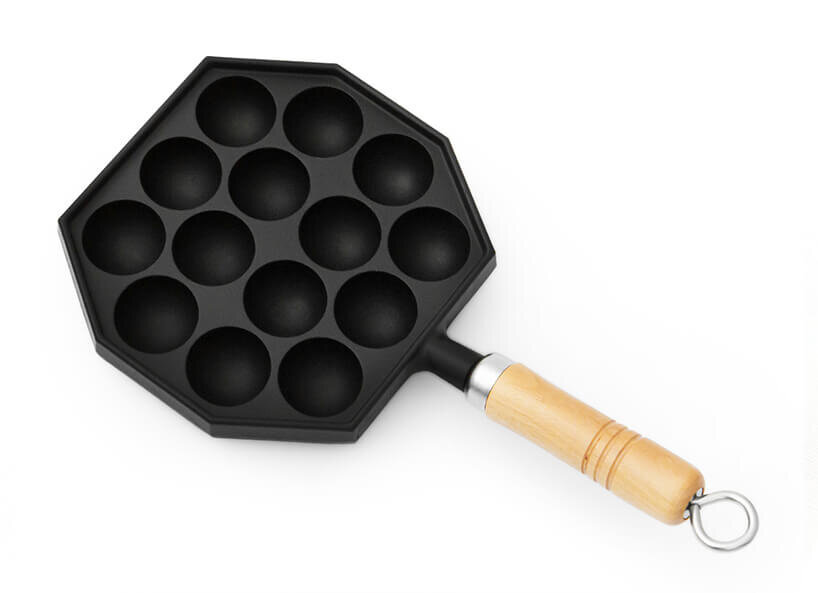
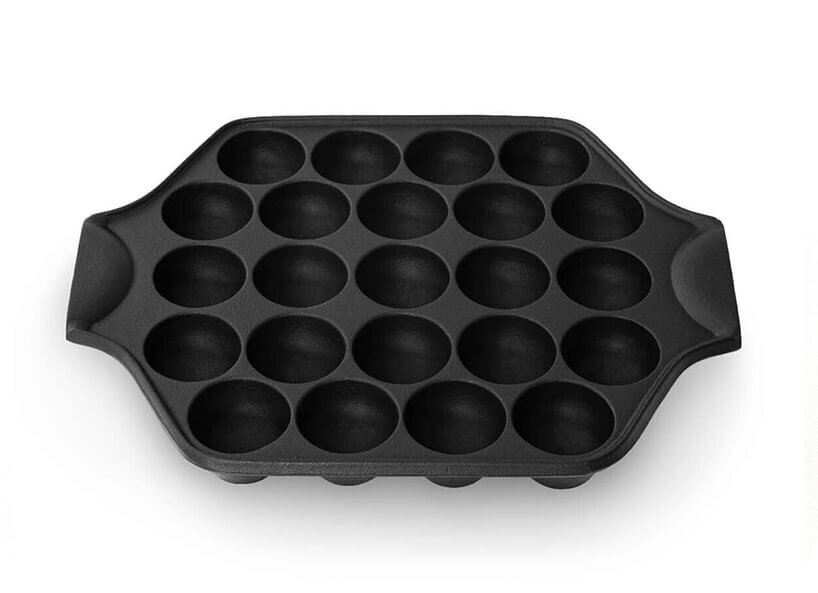










-from-the-yakiyaki-grill-pan.jpg)




